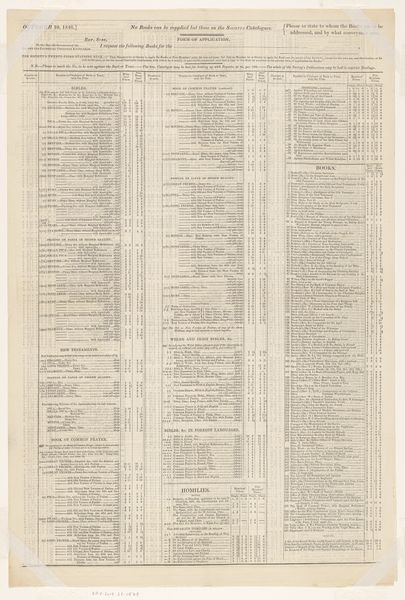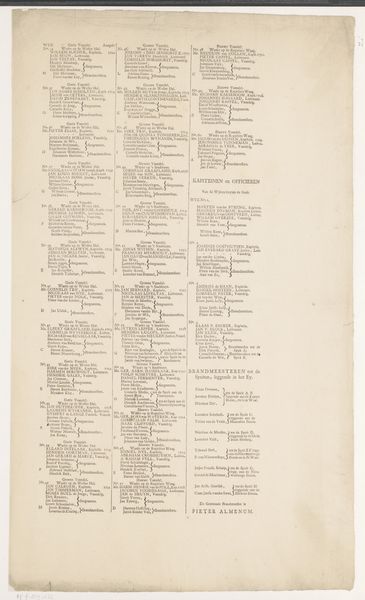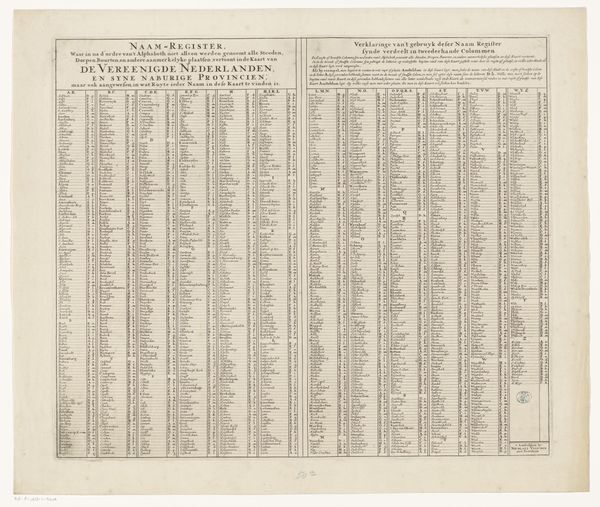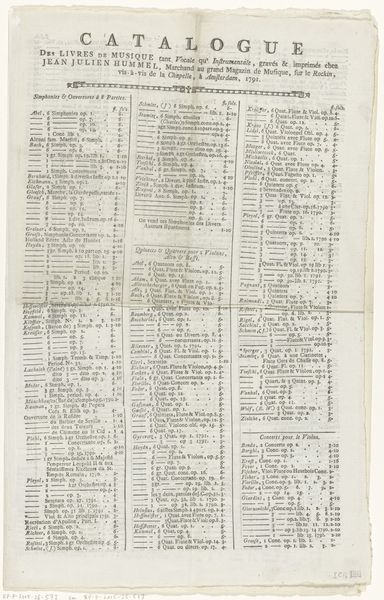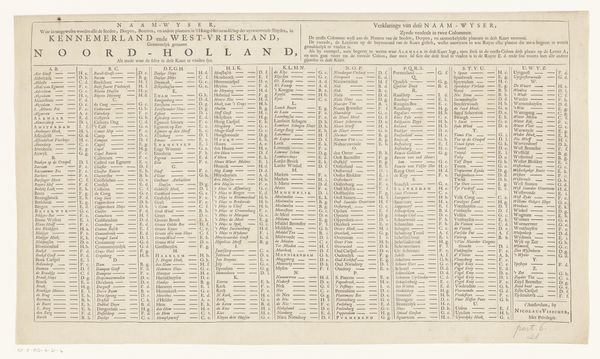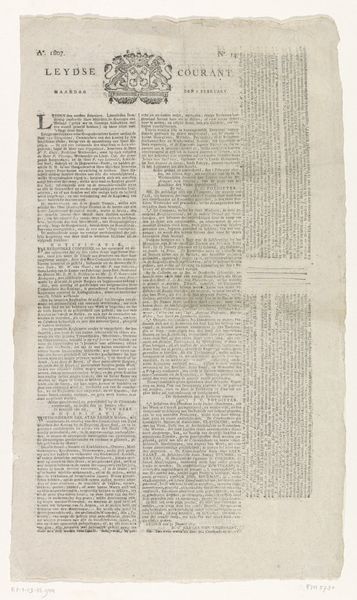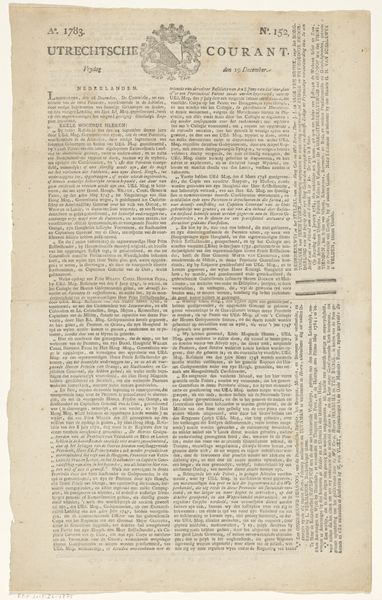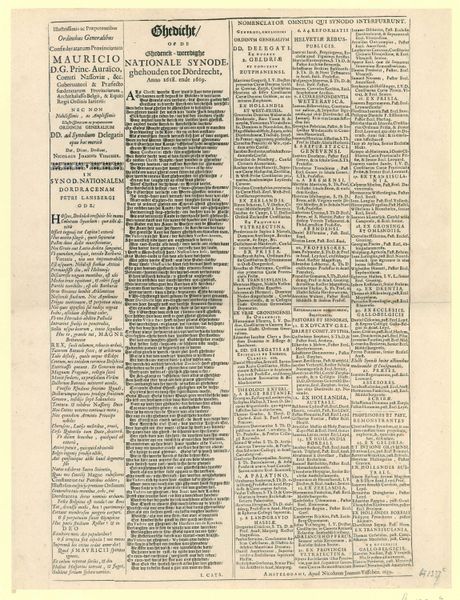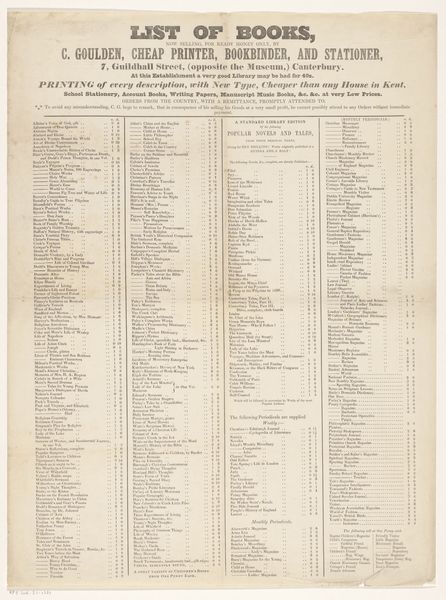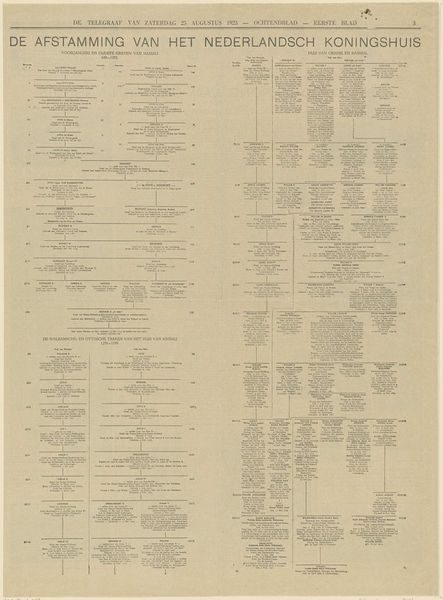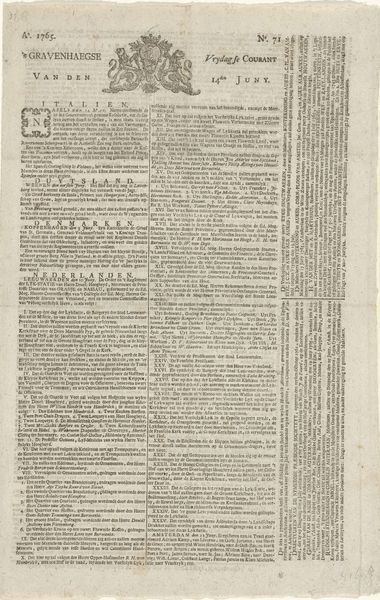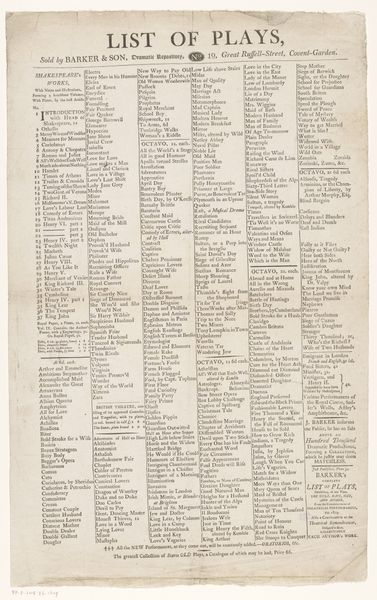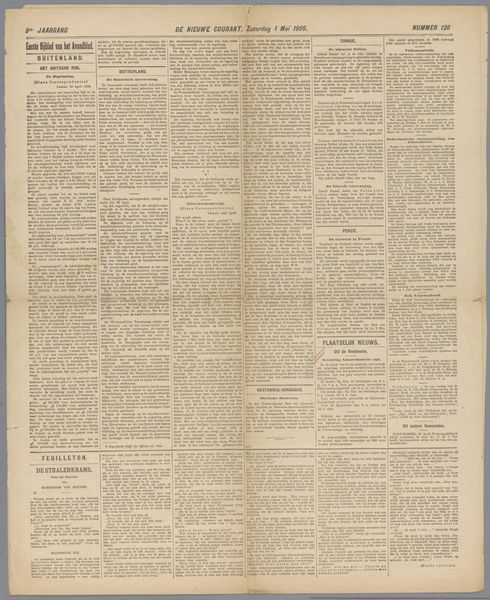
print, paper, photography
#
16_19th-century
# print
#
paper
#
photography
#
realism
Dimensions: height 572 mm, width 460 mm
Copyright: Rijks Museum: Open Domain
Curator: Well, hello there. This intriguing document, dating from 1866 to 1877, is titled “Fondslijst James Anderson.” It is held at the Rijksmuseum. It’s a print on paper showcasing the photographic work of James Anderson. Editor: Okay, immediately, I see just walls of text, carefully arranged... but my first instinct is to question the document’s very essence—is it even art? Or something else entirely, like historical cataloging or a price sheet? Curator: That's a brilliant entry point, really. This is indeed a finding list, meticulously compiled. It's a practical tool and promotional vehicle, itemizing the breadth of James Anderson’s photographic output. These were views he captured across Italy, Spain, and environs, as the header indicates, largely intended for Spithöver's Library. It demonstrates how photography served knowledge dissemination. Editor: So, function dictated form, right? Knowing that contextualizes it and, in my perspective, deepens its purpose as art. It’s less about aesthetic flourish, and more about cataloging life... literally a table of contents for a visual world at that time. Still... the details are practically unreadable. Is it meant to be poured over at length? Curator: I'm imagining some 19th-century scholar poring over it to order photos from afar... which underscores how different art dissemination was before digital technologies. Museums at this time period were centers for information, where a picture really was worth a thousand words, and one meticulously captured building more valuable than most could imagine. Editor: And there's something about the plainness, the matter-of-fact tone, that strips away any pretension. The photograph serves as the conduit for some deeper, historical understanding. You bring up museums, but even now in the 21st century, consider our social media feeds: in this format it still operates as this curated list of visual artifacts for review and analysis. Curator: Absolutely. Its austerity emphasizes accessibility and objectivity, at least as envisioned back then. Though the aesthetic is definitely something—a perfect artifact of information design from a century where data visualization had an entirely different visual language than now! Editor: A beautiful intersection between art, cataloging, and pure, historical document! Its stark simplicity really reframes the very purpose of art collection.
Comments
No comments
Be the first to comment and join the conversation on the ultimate creative platform.
